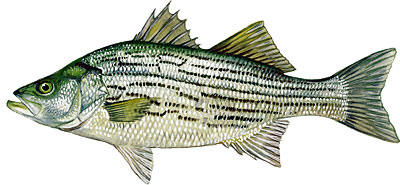Differences between Striped Bass and Hybrid Striped Bass
Can you tell the difference between a striped bass and a hybrid striped bass?
What is a Hybrid?
Hybrid striped bass (also known as a wiper or whiterock bass) is a hatchery-created hybrid between the pure striped bass and the white bass. As seen in the image below, hybrid can be distinguished from pure striper by the broken horizontal stripes going down the side of the body. Pure striped bass have solid lines from head to tail fin.
In addition to the differences in stripe patterns, hybrid striped bass also tend to have a deeper body (from dorsal fin to ventral fin; back to belly). Pure striped bass are more slender and skinnier.
Size-wise, hybrid striped bass are fast-growing but typically max out in length midway between its parents; a 10- or 12-pounder is considered a great catch!
Hybrid striped bass are known for aggressive feeding habits which makes them highly sought-after by anglers. Often schooling by the thousands, these stocked fish surface feed on local baitfish found in Wallenpaupack such as alewife. Often called “breaking”, this surface feeding makes the fish visible and easy to catch on a wide array of lures and baits. Popular lures include casting spoons, buck-tail jigs, soft-body plastic fish replicas, and inline spinners.
Pure Striped Bass
The striped bass has a slimmer profile, more streamlined than a striped bass hybrid, until it reaches a weight of five to 10 pounds, when its body becomes heavy-looking. The sides are silvery to pale silvery-green, shading to white on the belly. There are seven or eight distinct (unbroken) dark stripes that run laterally on the side of the body. Young striped bass do not have dark lateral stripes, but instead have dusky bars.
Pure striped bass catches in the 15- to 20-pound range are not uncommon in Pennsylvania. In fact, the Pennsylvania state records both for marine and landlocked striped bass are over 50 pounds!
Even landlocked striped bass instinctively migrate upstream in the spring to spawn, traveling into the mouths of large freshwater rivers. Water temperature signals spawning time, with some spawning occurring at 55 degrees, but most at 60 to 67 degrees.
In lakes, pure striped bass move according to temperature and dissolved oxygen in the lake favoring cooler arms within the body of water during the hot summer. Striped bass feed on just about anything alive that is available. Young striped bass eat microcrustaceans, or zooplankton, and midge larvae. As they grow, their diet changes to other fish. As adults, striped bass live in roving schools, feeding mostly at night.
So, What’s in Lake Wallenpaupack?
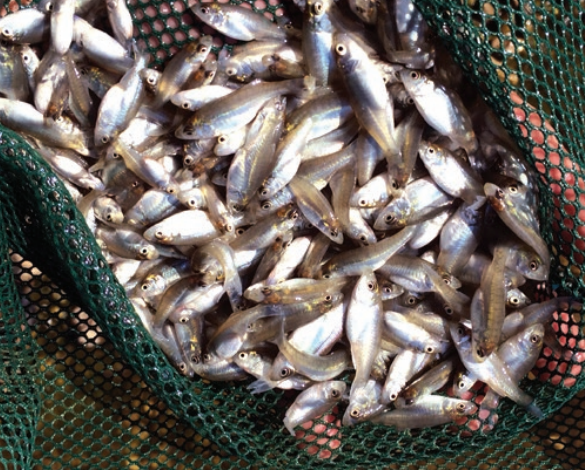
The Pennsylvania Fish and Boat Commission stocks pure and hybrid striped bass and has been since 2000. On record, they’ve stocked over 46 million pure striped bass fingerlings and fry and over 226,000 hybrid fingerling (source).
Think twice about keeping your catch!
Both Hybrid and Pure striped bass are functionally sterile, meaning reproduction is uncommon. This trait allows biologists the ability to manage striped bass populations based on available forage without the risk of overpopulating waterways.
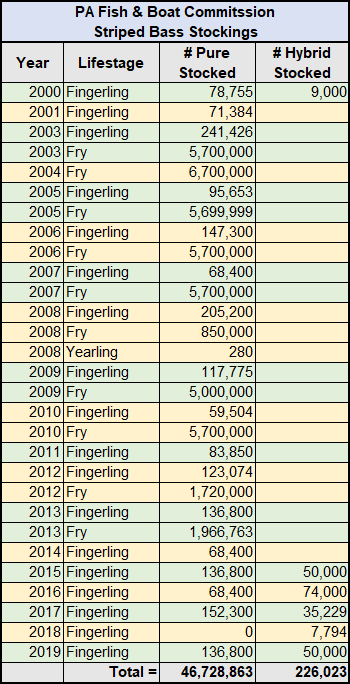
Stocked fingerlings typically reach legal length (20”) by the end of their fourth growing season!
2015 Pennsylvania Fish & Boat Commission Biologist Report of Lake Wallenpaupack
Examples from Local Anglers
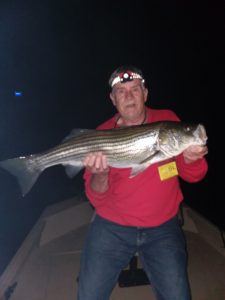 Mike Swingle | 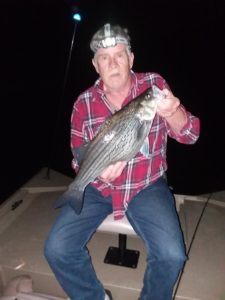 Mike Swingle |
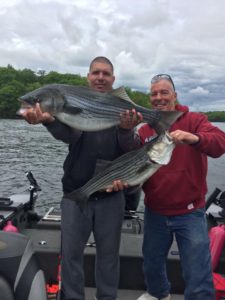 Jeff Antell |  Jeff Antell |
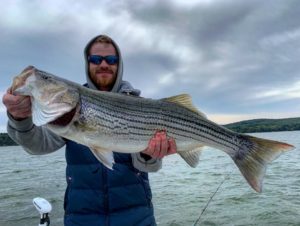 John Cook | |
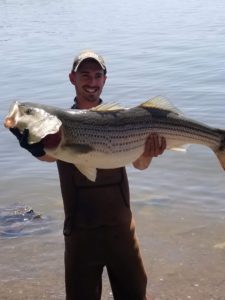 Joe Kreylin | |
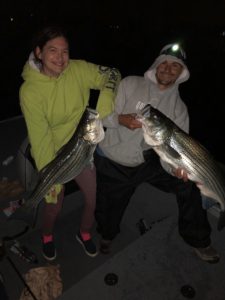 Will Hazimof | |
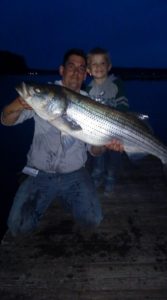 Kevin Carr | |
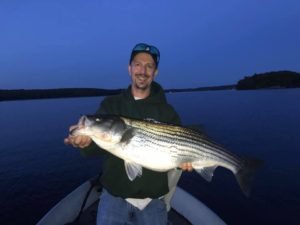 Greg Edwards |
